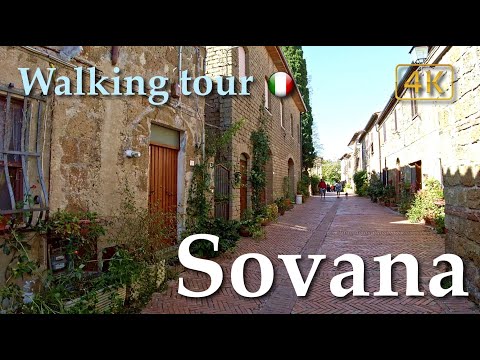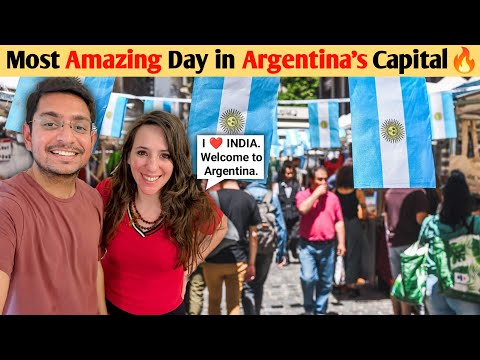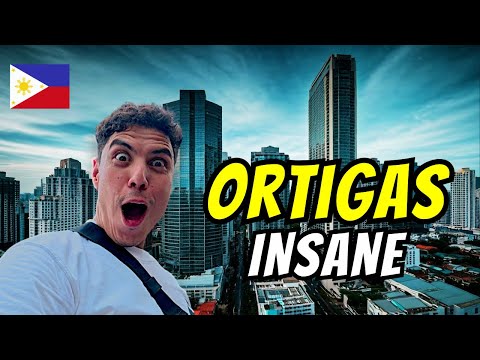Sovana (Tuscany), Italy【Walking Tour】With Captions - 4K

[Drone intro] [Walking tour begins / Via del Pretorio] 1/8 ☀️Brief History of Sovana☀️ *Suana* was an Etruscan center, which from the conquest of Vulci onwards (280 BC) underwent a gradual process of Romanization, culminating in the creation of the town hall with the granting of Roman citizenship to the Italics. 2/8 In the 5th century it is already documented as a bishopric. The current historic center developed during the Middle Ages in the vicinity of the pre-existing Etruscan necropolis, under the control of the Aldobrandeschi family, who had a castle built around the year 1000. 3/8 In medieval times it also became a free municipality and gave birth to Ildebrando di Sovana, who later became Pope Gregory VII; it was also the capital of the county of the same name. 4/8 At the end of the 13th century it was inherited by the Orsini following the same fate as Sorano and Pitigliano until the 15th century, when the center was conquered by the Sienese.
5/8 In the mid-16th century, the definitive fall of the Republic of Siena brought Sovana into the hands of the Medici, who incorporated it into the Grand Duchy of Tuscany. 6/8 The Medici tried to repopulate the village, in a state of severe degradation after the plague epidemics, with settlers from Greece: the attempt was useless, in 1702 only twenty-four people were registered in Sovana. Even under the "Lorena" family, despite the attempts, the situation did not improve. 7/8 Depopulated and abandoned, it has found new life in the course of the 20th century, thanks to the rich archaeological heritage that makes it a popular tourist destination. 8/8 The village is included in the list of the most beautiful villages in Italy sponsored by the National Association of Italian Municipalities. [Piazza del Pretorio] 1/2 ☀️Palazzo Bourbon del Monte☀️ it was built in 1558 at the behest of Cosimo I. It was the residence of the Bourbon del Monte family, feudal lord of the municipality of San Martino sul Fiora. 2/2 Fallen into disrepair during the 19th century, in the '60s of the following century the building was purchased by Professor Luciano Ventura, who began a conservative restoration work begun in 1968 and completed fifteen years later.
1/5 ☀️Church of Santa Maria Maggiore☀️ It seems to date back to the 12th century. Plundered by the Sienese in 1410 and by the Pitiglianesi in 1434, it was substantially modified in the 16th century, when the adjacent Palazzo dell'Archivio was built. 2/5 Until the 17th c. there was also a bell tower leaning against the church, which was then replaced with the sail tower that we still see today. 3/5 Inside there are works of considerable interest: two frescoes of the Crucifixion between Saints Antonio and Lorenzo and San Sebastiano and San Rocco (1527) and of the Madonna and Child Enthroned between Saints Barbara and Lucia and San Sebastiano and San Mamiliano (1508). 4/5 Also, there is a painting with the four evangelists and the blessing Eternal (16th century); a fragmentary Madonna and Child with Saints Raphael and Tobiolo, Mamiliano, Antonio da Padova and Lucia (16th century); 5/5 Also there is a Crucifixion between Saint Anthony the Abbot and Pope Gregory VII (15th century); a very interesting ciborium with four tapered columns and a decorated canopy from the 9th century. [Piazza del Pretorio] ☀️Palazzo Pretorio & Captain's Loggia☀️ It seems to date back to the 12th century: it is attested in 1208 as the place where Aldobrandino VIII signed his will. The palace was subsequently restored by the Sienese after 1413, while in 1676 it is remembered as having prisons. Today it houses an exhibition at the Sovana museum center.
1/4 ☀️Archive Palace☀️ The palace was built in the 12th century to house the municipal seat of Sovana, which in that period experienced a strong expansion after the glories of the Etruscan era. 2/4 The original medieval structure remained intact until 1433, the year in which Sovana was besieged in retaliation by the troops of the County of Pitigliano, following the killing of Count Gentile Orsini: the damage was serious. 3/4 In 1588 the clock was built and, in the seventeenth century, the bell tower was added: it was during the 17th century that the building began to host the Sovana archive, which is why it is also known by this name.
4/4 Between the second half of the 19th century and the early 20th century the building experienced a long period of decay; a series of recent restorations have made it possible to bring it back to its ancient splendor. [Via Rodolfo Siviero] 1/2 ☀️Cathedral of St.Peter☀️ Dating back to the 10th century, it was built by Gregory VII on a pre-existing building of the 6th century and the structure has remained almost unchanged - except for the reconstruction of the facade in the 14th century. 2/2 In 1999 some restoration works were carried out, which made it possible to make the crypt that houses the remains of San Mamiliano accessible again. [Via del Duomo] ☀️Birthplace of Pope Gregory VII☀️ Located along via di Mezzo, it is a simple building of medieval origins, with wall structures entirely covered in tuff blocks. Inside , in the past, t was housed the museum of terrestrial malacology. [Piazzola del Sileno] [Via del Duomo] [Piazza del Pretorio]
2021-10-18 17:13


